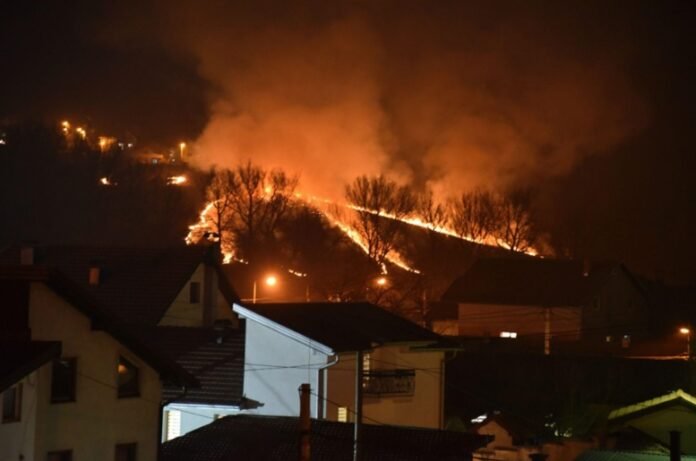Emergency preparedness is a critical aspect of staying safe in Australia, a country known for its unique and sometimes extreme environmental conditions. From bushfires and floods to cyclones and severe storms, Australian homeowners face a myriad of potential emergencies. While government and community resources provide significant support, it’s essential for homeowners to take proactive steps to protect their families and properties. This article aims to offer actionable tips for effective emergency preparedness, ensuring safety and peace of mind.
Understanding the Risks in Your Area
To prepare adequately, it’s crucial to understand the specific risks in your area. Different regions in Australia are prone to distinct natural disasters. For instance, bushfires are more common in rural and peri-urban areas, while coastal regions may experience cyclones. Floods can affect both rural and urban locations, particularly those near rivers and lakes.
Assessing local environmental and man-made risks is an important step. Local government websites often provide detailed risk maps and information on historical data. Consulting these resources can help identify the most pertinent threats. Additionally, mapping out potential evacuation routes and safe zones is essential. Familiarise yourself with local shelters and evacuation centres, ensuring you have a clear path to safety.
Creating Your Emergency Plan
A comprehensive family emergency plan is the cornerstone of preparedness. Begin by discussing potential scenarios with your family, ensuring everyone knows their roles and responsibilities. Key steps in developing an emergency plan include:
1. Establishing Communication Strategies: Ensure all family members know how to contact each other during an emergency. Pre-arranged communication methods like SMS or a designated WhatsApp group can be invaluable. Keep a list of emergency contacts handy and share it with all family members.
2. Designating an Emergency Meeting Point: Choose a safe place where everyone can regroup if separated. This location should be easy to reach and away from potential hazards.
3. Regularly Practising and Updating Drills: Conduct regular emergency drills to ensure everyone is familiar with the plan. Update your plan periodically, especially after major life changes or new information about risks.
Assembling an Emergency Kit
A well-stocked emergency kit can make a significant difference during a crisis. Essential items for a general emergency kit include:
– Non-perishable food and bottled water for at least three days
– Battery-powered or hand-crank radio
– Flashlight and extra batteries
– First aid kit
– Whistle to signal for help
– Dust masks for filtering contaminated air
– Local maps
– Multi-tool or Swiss army knife
For families with specific needs, consider additional supplies. Households with children may need baby food, nappies, and toys. Elderly residents might require extra medical supplies and medications. Don’t forget to include essential items for pets, such as food, water, and comfort items.
Storing important documents like passports, insurance papers, and medical records is equally crucial. Keep these in a waterproof container, along with any necessary medications.
Maintaining and refreshing your emergency kit should be a routine task. Check expiration dates on food and medications, replacing them as needed. Periodically review the contents to ensure they remain relevant to your family’s needs.
Securing Your Home
Ensuring your home can withstand potential hazards is a proactive measure that should not be overlooked. Start with a thorough home safety audit, identifying areas that need fortification. For natural disasters like bushfires and floods, specific measures can significantly enhance home safety:
Fortifying Against Bushfires: Clear vegetation and debris from around the house, creating a defensible space. Consider tree removal for safer homes, particularly if they pose a fire risk.
Protecting Against Floods: Elevate electrical appliances and install flood barriers where necessary. Ensure drainage systems are clear and functional.
Installing emergency systems such as smoke detectors and alarms is another crucial step. Regularly test these systems to ensure they operate correctly. Smoke detectors, carbon monoxide alarms, and security systems can provide early warnings and potentially save lives.
Structural stability and waterproofing are also vital. Inspect your home periodically for any signs of wear or damage, addressing these issues promptly. Reinforce roofs and windows, and consider adding storm shutters if you live in a cyclone-prone area.
Staying Informed During Emergencies
Information is a powerful tool during emergencies. Rely on trusted sources for updates, such as official government websites, emergency services apps, and local radio stations. These sources provide timely and accurate information, helping you make informed decisions.
Understanding emergency warning systems and signals is equally important. Each type of emergency may have specific alert levels and corresponding actions. Familiarising yourself with these can ensure you respond appropriately when alarms sound.
Setting up alerts and notifications on your mobile device can keep you informed on the go. Most emergency services and weather apps offer real-time alerts that can be customised to your location and needs.
Collaborating with neighbours and the community is another effective strategy. Create a network of trusted contacts who can share information and provide assistance during emergencies. Community resilience is often bolstered by strong, supportive relationships.
Conclusion
Emergency preparedness is not just a necessity; it’s a responsibility that can ensure the safety and well-being of your family and home. Taking proactive steps such as understanding local risks, creating a detailed emergency plan, assembling a comprehensive kit, securing your home, and staying informed during emergencies can make a significant difference.
Regularly reviewing and practising your emergency plan keeps everyone prepared and ready to act when required. Community resilience is built on mutual support, so don’t hesitate to engage with neighbours and local resources. Remember, preparedness is an ongoing process. By staying vigilant and informed, Australian homeowners can face emergencies with confidence and protect what matters most.















